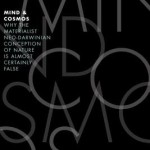Do Christians Believe in Talking Snakes?
by Fr. Dwight Longenecker
Filed under The Bible
You know how the story goes: in the Garden of Eden Adam and Eve have a conversation with the serpent.
Does this mean Christians believe in talking snakes? That’s the charge from certain atheists. To be a Christian, they assume, you have to believe in talking snakes. But then why are there an awful lot of well-educated, smart Christians? Are they simply all gullible or deluded?
This story in Genesis about the talking snake, like many others, has to be interpreted using what experts call “literary criticism.” Here's how it applies to the talking serpent in Genesis.
First of all we accept that the story is just that: a story. Christians realize that this is not really the sort of story that we need to take literally. It was never intended to be read as a historical account of events that took place in a particular garden six thousand years ago somewhere near Iran. It is a story about the beginnings of guilt and evil in the world. This doesn’t mean that the story was totally made up. Indeed, Catholics teach that there was a historical “Adam” and “Eve” who did make a wrong choice. We are not insistent however that the story as it is recorded is word for word literally true. We allow that it may be a legendary story–that the events are rooted in history, but that over time the details were lost and the meaning of the story became more important than the history.
This is not being tricky or evasive. It is recognizing that the stories at the beginning of Genesis are very ancient and that ancient people told stories and recorded their history in a very different way than we do. To read stories that are thousands of years old one has to try to get into the mindset of the people to whom the stories belong and from whom they originated. We do this all the time with other forms of literature. If we read Grimm’s fairy tales we imagine the world of eighteenth and nineteenth century Europe. Same with any historic document.
There are other things to consider as well if we are to understand religious literature. Religious literature is always about meaning more than facts. Once we accept that this is not a newspaper report of particular events, but a reflection on the meaning of real events, we’ll start to understand what’s going on.
Secondly, we allow for something called “metaphor”. That is to say that the language used may well be symbolic of the situation rather than literal. This is how literature works. A legend, a story, a fairy tale, a myth, or a poem relates truth through metaphorical language. Therefore the fruit tree might be symbolic of a choice that had to be made. The garden may be symbolic of a beautiful state of innocence in which mankind was enjoying. Likewise the serpent may be the way the storytellers spoke about a being who was behaving in a sneaky and serpentine manner.
Think how this might develop in a story over time. First they said, “That old devil! He was just like a snake the way he was sneaking around!” then someone said, “That old devil. He was a real snake!” Then someone said, “The snake tempted them and said…” You can see that perhaps they never meant that it was a real snake talking to start with.
But then again, while all these explanations work we can also allow that a long time ago perhaps people did communicate with animals more freely. Some people today are very gifted in “talking” with animals and listening to what they have to say.
When you use the imagination all sorts of things are possible. I can relate, for instance, the time a bird spoke to me. I was walking over to church for evening prayer and was praying as I was walking. I was worried about the fact that I had to take part in a healing service and I was not confident about it and was feeling doubtful. As I walked along a bird hopped along at my side. As it chirped its peculiar rhythm I seemed to hear it reciting a reference to a Bible verse. “Mark 3:32,” it seemed to say. I heard it in my mind as the bird was chirping. Then when I got to church I got a Bible and opened it up and the verse was about Jesus healing a person and telling his disciples to do the same. So, if you like, a bird spoke to me.
Perhaps that’s how the serpent spoke to Adam and Eve.
Or maybe before the fall into brokenness and sin the animals and humans really could speak to one another.
Or maybe God just did a miracle so the snake could talk.
There are lots of possibilities, but the point is that it's not necessary for Christians to believe in a literally talking snake.
Related Posts
Note: Our goal is to cultivate serious and respectful dialogue. While it's OK to disagree—even encouraged!—any snarky, offensive, or off-topic comments will be deleted. Before commenting please read the Commenting Rules and Tips. If you're having trouble commenting, read the Commenting Instructions.













